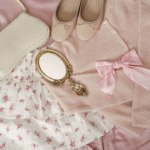Fashion is an ever-evolving reflection of society, culture, and technology. It is not merely about clothing; it is a form of self-expression, an economic powerhouse, and a global industry that shapes our identities. From ancient civilizations to futuristic smart fabrics, fashion has continuously adapted to human needs, artistic movements, and technological advancements.
In this article, we will explore the history of fashion, its transformation over the centuries, and what the future of fashion holds in the era of sustainability, digital innovation, and global influence.
The Origins of Fashion: Ancient Civilizations and Clothing as Identity
Fashion dates back to the earliest human societies when clothing was primarily used for protection against harsh environments. However, as civilizations developed, clothing evolved to symbolize status, wealth, and cultural identity.
1. Prehistoric and Ancient Fashion
- Prehistoric Era (before 3000 BCE): Early humans used animal skins, fur, and woven grass to protect themselves from cold and harsh weather.
- Ancient Egypt (3000–30 BCE): Egyptians wore linen garments due to the hot climate. Clothing was simple yet elegant, with pleated tunics, kilts, and elaborate headdresses for the wealthy.
- Ancient Greece (1200–146 BCE): Fashion emphasized draped garments such as the chiton and himation, reflecting Greek ideals of beauty and simplicity.
- Ancient Rome (753 BCE–476 CE): Romans introduced the toga, a garment that symbolized citizenship and status. Fabrics became more luxurious, with silk and wool being widely used.
2. The Middle Ages and Renaissance (5th–16th Century)
- During the medieval period, clothing reflected social hierarchy. Peasants wore simple tunics, while the nobility adorned themselves with embroidered gowns, fur, and rich textiles.
- The Renaissance (14th–17th century) brought about artistic influences in fashion. European clothing became more elaborate, with corsets, voluminous skirts, and intricate lacework defining the era.
3. The 18th and 19th Century: The Birth of Modern Fashion
- The 18th century was marked by extravagant fashion, especially in France. The court of Louis XVI saw extravagant gowns, wigs, and corsetry, symbolizing the aristocracy’s lavish lifestyle.
- The Industrial Revolution (late 18th–19th century) changed fashion forever, allowing mass production of clothing. Textiles became cheaper, and ready-to-wear fashion was born.
- The Victorian era (1837–1901) introduced modesty in women’s fashion, with long dresses, high collars, and detailed embellishments.
The 20th Century: The Revolution of Fashion
The 20th century saw the most dynamic changes in fashion, from the elegant designs of the early 1900s to the experimental and rebellious trends of the late 1900s.
1. 1900s–1920s: The Birth of Modern Elegance
- The early 1900s were defined by corsets and structured gowns, led by designers like Charles Worth.
- The 1920s introduced flapper fashion, a movement that symbolized women’s liberation. Coco Chanel popularized relaxed, simple clothing, and skirts became shorter.
2. 1930s–1950s: Hollywood Glamour and Post-War Fashion
- The Great Depression of the 1930s led to practical fashion with longer hemlines and more subdued colors.
- The 1940s wartime fashion saw rationing of fabrics, leading to shorter skirts and military-inspired designs.
- The 1950s brought back femininity, with Christian Dior’s “New Look” featuring cinched waists and full skirts.
3. 1960s–1980s: The Era of Rebellion and Pop Culture
- The 1960s were a revolution in fashion, with mini skirts, psychedelic prints, and youth culture shaping the industry.
- The 1970s embraced bohemian fashion, disco styles, bell-bottoms, and ethnic influences.
- The 1980s introduced power dressing, with padded shoulders, bold colors, and oversized blazers defining professional and celebrity fashion.
4. 1990s–2000s: Minimalism to Streetwear
- The 1990s rejected excess and moved towards grunge, minimalism, and casual fashion. Denim, oversized clothing, and black-and-white aesthetics dominated.
- The 2000s saw the rise of streetwear, luxury collaborations, and the influence of hip-hop culture. Fashion became more accessible through fast fashion brands like Zara and H&M.
The Future of Fashion: Innovation, Sustainability, and Digital Transformation
As we enter 2025 and beyond, the fashion industry is evolving in response to technology, climate change, and consumer demands. Here are some of the major trends shaping the future of fashion:
1. Sustainable and Ethical Fashion
- Eco-friendly fabrics such as organic cotton, recycled materials, and biodegradable textiles are becoming the norm.
- Brands are adopting circular fashion, where clothes are designed to be reused, repaired, or recycled.
- Slow fashion movements encourage consumers to invest in high-quality, long-lasting clothing rather than fast fashion.
2. Digital and Smart Fashion
- Virtual fashion and NFTs: Digital fashion is becoming a reality, with designers creating virtual clothing for avatars and the metaverse.
- Smart textiles and wearable technology: Innovations like temperature-adjusting fabrics and self-cleaning clothing are on the rise.
- AI-driven fashion design: Artificial Intelligence is now being used to predict trends, personalize clothing, and even design garments.
3. The Rise of Customization and 3D Printing
- Consumers want unique, customized clothing, leading to more made-to-order and 3D-printed garments.
- Brands are using AI to recommend clothing based on individual preferences.
4. Global and Cultural Influence in Fashion
- The internet and social media have made fashion a truly global industry. African, South Asian, and Middle Eastern designs are gaining international popularity.
- Fashion weeks are expanding beyond Paris, Milan, New York, and London to include Shanghai, Lagos, and Mumbai, showcasing diverse creativity.
5. Direct-to-Consumer and Digital Fashion Retail
- Online shopping dominates, with AI-driven recommendations and virtual fitting rooms improving customer experience.
- Sustainable fashion rental and resale markets are booming, reducing waste and promoting conscious consumerism.
Conclusion: The Everlasting Evolution of Fashion
From ancient civilizations to the digital age, fashion has continuously evolved to reflect the values, technology, and creativity of its time. The future of fashion will be defined by sustainability, innovation, and inclusivity, ensuring that fashion remains a powerful tool for self-expression and cultural evolution.
As we step into the future, the fashion industry must balance creativity with responsibility, embracing new technologies, ethical practices, and global perspectives. Whether through smart textiles, sustainable fashion, or digital clothing, the next era of fashion promises to be revolutionary.
Are You Ready for the Future of Fashion?
Fashion is no longer just about clothing—it’s a movement, a statement, and a powerful industry shaping our world. The future is here, and it’s sustainable, digital, and limitless. The question is: Are you ready to be a part of it?Bottom of Form














